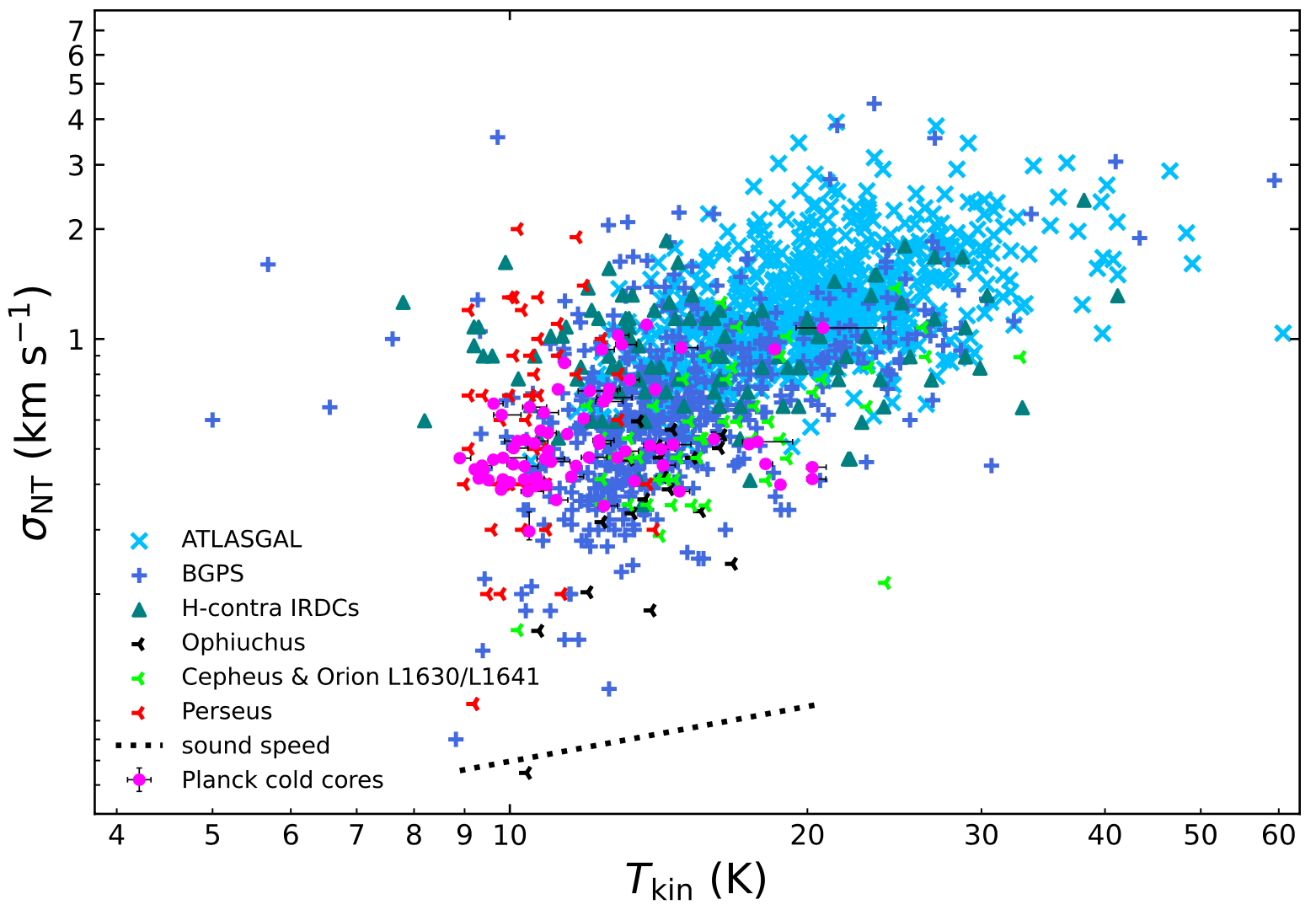

Researchers Observe Emission Lines in Planck Cold Cores with Nanshan 26-m Radio Telescope
Recently, Dilda Berdikhan, a PhD student from the star formation and evolution research group of the Xinjiang Astronomical Observatory (XAO) of the Chinese Academy of Sciences (CAS), and her collaborators used the NanShan 26-meter Radio Telescope (NSRT) to observe NH3 (1,1) and (2,2) inversion transitions in the Planck cold core Milky Way.
The results have been published in Astronomy & Astrophysics.
The Planck cold cores are a set of sources identified by the Planck team in 2011 using the Planck telescope's all-sky data in the millimeter to sub-millimeter wavelength range. Subsequent observational studies have shown that these Planck sources are in early stages of star formation. Ammonia molecule is an excellent tracer of molecular clouds with a density of ~103 cm-3 and a temperature of < 40 K.
The researchers thus performed ammonia observations towards 672 Planck sources using the NSRT. The results indicated that 249 (37%) Planck cold cores detected NH3(1,1) emission lines, with 187 cores detected hyperfine structure, and 76 cores showing detections of NH3(2,2) emission lines.
They calculated important physical parameters of the cold cores, such as NH3 line width, column density, kinematic temperature, and NH3 abundance. Comparisons with samples from various evolutionary stages have revealed that NH3 kinematic temperature can serve as a tool for distinguishing between different stages. The kinematic temperature of UC HII region candidates is higher than that of Planck cold cores, while the latter exhibit lower temperatures than high infrared extinction clouds.

Contact: Dilda Berdikhan
Xinjiang Astronomical Observatory, Chinese Academy of Sciences
Email: dilda@xao.ac.cn
Article link:https://ui.adsabs.harvard.edu/abs/2024A%26A...684A.144B/abstract
Attachment Download: